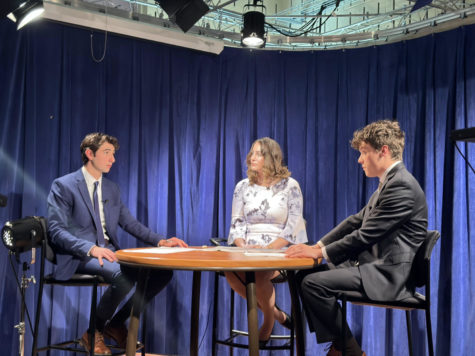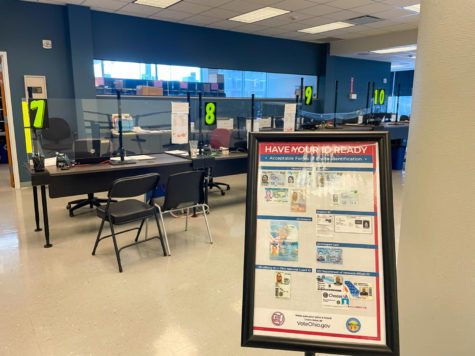As Students Return to Mask-Optional Campus, Reported COVID-19 Case Numbers Remain Low
After the first full week of classes under Baldwin Wallace’s new health protocols, which most notably included the lifting of its campus-wide mask mandate, BW has only reported 2 COVID-19 cases on campus as of March 18.
According to numbers released by the University on its BW Be Safe COVID-19 dashboard, 1 employee tested positive, and 1 student was isolating off campus at press time. Students, faculty, and staff who test positive are required to isolate for 5 days, after which they may break isolation and practice strict mask wearing for an additional 5 days, provided they have no symptoms.
“Since the start of last semester, BW adjusted COVID-19 protocols to respond to the omicron variant,” a university statement on the BW Be Safe dashboard read. “After an anticipated spike in cases early in this semester, student and employee cases have dropped significantly and have remained at a low level.”
While the numbers are encouraging, they do not mean BW is entirely out of the woods yet. According to the Centers for Disease Control and Prevention, the incubation period for COVID-19 is between 2 and 14 days with a median of 5 days, and the most recent batch of reported cases essentially only covers the 5 days since full campus activities resumed. BW reports case numbers every Friday.
Additionally, Baldwin Wallace suspended surveillance testing in early February, meaning that the dashboard now only consists of self-reported cases. Contact tracing was also discontinued. While BW requires community members to positive self-tests, it is hard to know an exact number of cases with absolute certainty.
Still, the low reported numbers are aligned with the COVID-19 picture in Cuyahoga County overall. As of March 17, the 7-day average of new cases was 43, the New York Times reported.
While cases in Europe and elsewhere have begun to rise over the past weeks as a result of the BA.2 Omicron subvariant, which is now beginning to be detected in U.S. states, it is unclear how, if at all, Cuyahoga County and the U.S. will be affected.
U.S. health experts have said that since the first Omicron surge in December affected so many Americans – officials have estimated that nearly half of Americans have built up immunity to the virus and one estimate puts the number as high as 73% – BA.2 is unlikely to make as large a dent on this side of the Atlantic.
“I’m not expecting a big surge here, but we’re gonna have to pay close attention and really be driven by data as we have throughout the whole pandemic,” incoming White House COVID-19 Response Coordinator Dr. Ashish Jha said.
As experts determine what action regarding BA.2 is necessary, Baldwin Wallace will continue to monitor guidance from relevant health agencies and the CDC. In a February interview ahead of BW’s lifting of the mask mandate, Dan Karp, assistant vice president and director of university relations told The Exponent what goes into the University’s decisions regarding COVID-19 protocols.
“We’ve been saying all along if the CDC makes a move before we’re ready to make a move, then we may have to accelerate our plan,” Karp said. “But again, this is all dependent on what’s actually happening in reality, regardless of policy, you know, what’s happening on campus and in our area.”
While Karp told The Exponent there is not a specific benchmark or set of criteria that would trigger a new change in protocols, he said that while not currently mandatory, mask-wearing is still a positive course of action.
“For many reasons, we encourage people to continue to wear [masks],” Karp said. “If the CDC came out with, you know, ‘you don’t have to make a requirement that we encourage people to wear masks for any number of reasons,’ we’ll be reflecting that in our efforts.”
Do you have thoughts or concerns regarding BW’s new Health and Safety Protocols? Do you agree or disagree with the lifting of the mask mandate? The Exponent wants to hear from you! Letters to the editor are encouraged as a method to bring issues of concern into the public eye. Letters should be typed, limited to no more than 300 words, include a full name and include a phone number for confirmation. Letters may be sent to The Exponent via email to our Executive Editor Nicki Hodgkiss at [email protected].
The Exponent is looking for financial contributions to support our staff and our newsroom in producing high-quality, well-reported and accurate journalism. Thank you for taking the time to consider supporting our student journalists.














































